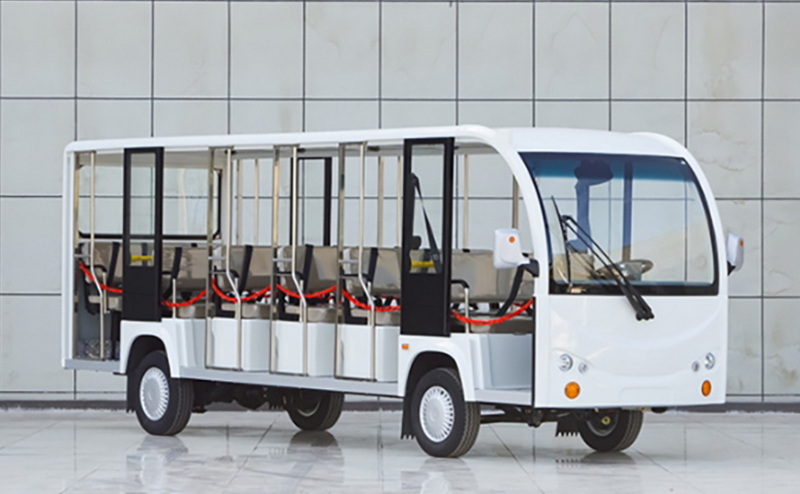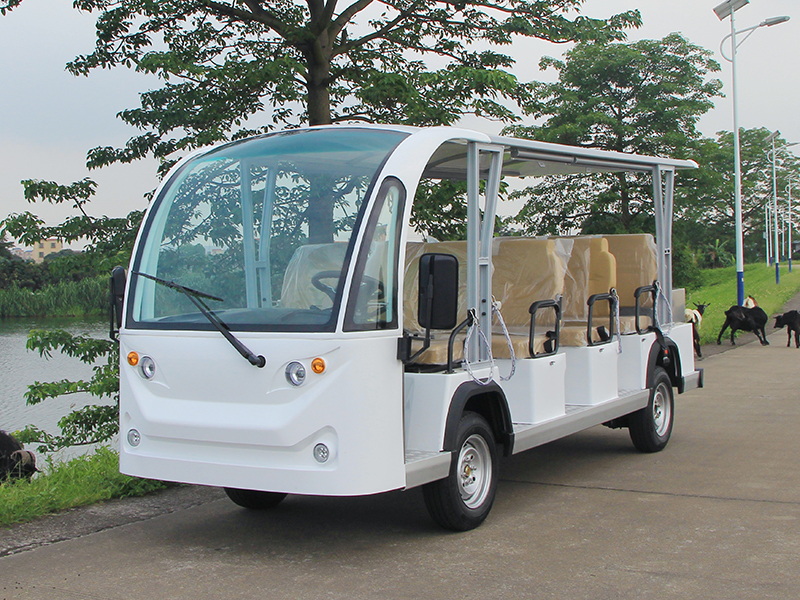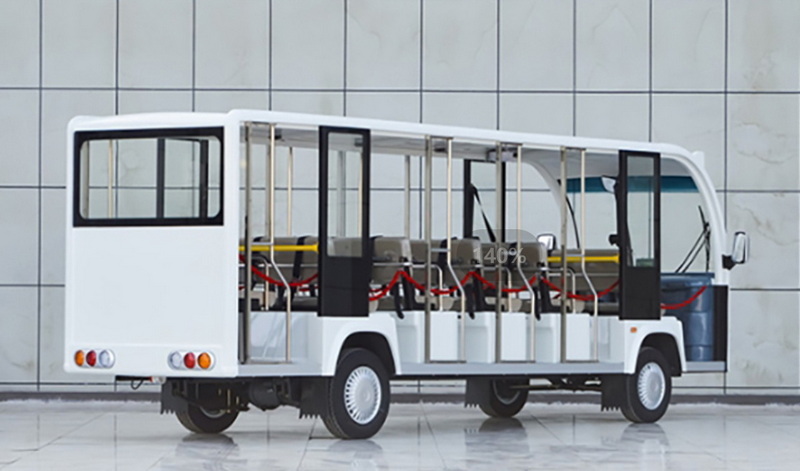Content Menu
● Understanding Electric Tourist Bus Builders
● Key Considerations When Choosing Electric Tourist Bus Builders
>> 1. Experience and Reputation
>> 2. Technology and Innovation
>> 3. Customization and Design
>> 4. Range and Charging Infrastructure
>> 5. Compliance with Regulations
>> 6. After-Sales Service and Support
>> 7. Cost and Financing Options
>> 8. Sustainability and Environmental Impact
>> 9. Passenger Comfort and Experience
>> 10. Integration with Smart City and Tourism Technologies
● Practical Tips for Selecting Your Builder
● Conclusion
● Frequently Asked Questions (FAQ)
>> 1. What are the main advantages of electric tourist buses over traditional diesel buses?
>> 2. How long does it typically take to charge an electric tourist bus?
>> 3. Are electric tourist buses suitable for long-distance tours?
>> 4. What kind of maintenance do electric tourist buses require?
>> 5. Can electric tourist buses operate in extreme weather conditions?
As the world shifts towards sustainable transportation, electric tourist buses have emerged as a popular and eco-friendly choice for travel and sightseeing. Choosing the right electric tourist bus builder is critical to ensure you get a high-quality, reliable, and efficient vehicle that meets your specific needs. This comprehensive guide explores the essential factors to consider when selecting electric tourist bus builders, technological aspects, and practical considerations.

Understanding Electric Tourist Bus Builders
Electric tourist bus builders are specialized manufacturers that design and produce electric buses tailored for tourism and sightseeing purposes. These buses combine environmental sustainability with passenger comfort and operational efficiency.
Electric tourist buses are more than just vehicles; they represent a commitment to reducing carbon footprints while enhancing the travel experience. These builders focus on integrating cutting-edge electric drivetrains, energy-efficient battery systems, and passenger-centric designs that elevate sightseeing tours to new levels of comfort and engagement.
Key Considerations When Choosing Electric Tourist Bus Builders
1. Experience and Reputation
Choosing a builder with a proven track record in manufacturing electric tourist buses is crucial. Established companies like Yutong and BYD have delivered thousands of electric buses worldwide, ensuring reliability and quality. Builders with extensive experience are more likely to provide durable vehicles and better after-sales support.
Experience often translates into refined manufacturing processes, superior quality control, and a deeper understanding of customer needs. A reputable builder will have a portfolio of successfully deployed buses in various environments, from urban sightseeing routes to rural tourist destinations, demonstrating versatility and dependability.
2. Technology and Innovation
Electric bus technology is rapidly evolving. Look for builders investing in advanced battery systems, efficient electric drivetrains, and smart energy management. For example, BYD uses proprietary lithium iron phosphate battery technology, offering superior safety and longevity. Builders like Proterra focus on innovative battery and charging solutions, enhancing operational efficiency.
Innovations such as regenerative braking, lightweight materials, and integrated telematics systems can significantly improve the performance and sustainability of electric tourist buses. Some builders also incorporate solar panels on bus roofs to supplement battery power, further extending range and reducing energy consumption.
3. Customization and Design
Tourist buses require specific features such as panoramic windows, comfortable seating, and sometimes double-decker designs for sightseeing. Builders like Ankai specialize in electric double-decker sightseeing buses, combining capacity with passenger experience. Ensure the builder can customize the bus to your route, climate, and passenger needs.
Customization extends beyond aesthetics. Climate control systems tailored to local weather, accessibility features such as wheelchair ramps, and infotainment systems enhance passenger satisfaction. The ability to tailor interior layouts, seating arrangements, and even exterior branding can help create a unique and memorable experience for tourists.
4. Range and Charging Infrastructure
Evaluate the electric bus's range to ensure it suits your tour routes. Consider the charging options and infrastructure support offered by the builder. Some buses support fast charging, reducing downtime. For instance, BYD electric buses can be charged in 1.5 to 2 hours, suitable for intensive daily operations. Also, assess if the builder provides assistance with charging station installation and grid integration.
Range anxiety is a common concern for operators transitioning to electric buses. Understanding the real-world range under different load and terrain conditions is vital. Builders who offer comprehensive charging solutions, including depot chargers, opportunity charging, and mobile charging units, provide greater operational flexibility.
5. Compliance with Regulations
Electric tourist buses must comply with local and international safety, environmental, and operational regulations. Builders like Solaris and Volvo emphasize meeting stringent European emission and safety standards. Verify that the builder's vehicles are certified and compliant with your region's requirements.
Compliance ensures not only legal operation but also passenger safety and environmental responsibility. Regulations may cover crashworthiness, fire safety, electromagnetic compatibility, and noise limits. Builders who proactively design buses to exceed these standards demonstrate a commitment to quality and safety.

6. After-Sales Service and Support
Reliable after-sales service is essential for maintaining operational uptime. Check if the builder offers comprehensive maintenance packages, spare parts availability, and technical support. Companies with global service networks, such as Higer Bus and Yutong, provide better support for international operators.
Effective after-sales support can include remote diagnostics, software updates, training for maintenance staff, and rapid parts delivery. A responsive service network minimizes downtime and helps operators manage costs over the vehicle's lifecycle.
7. Cost and Financing Options
Electric buses generally have higher upfront costs compared to diesel buses but offer lower operating and maintenance expenses over time. Compare pricing, warranty terms, and financing options. Some builders collaborate with financial institutions to offer leasing or installment plans, easing the investment burden.
Understanding the total cost of ownership (TCO) is critical. Consider government incentives, subsidies, and tax breaks available for electric vehicles in your region. Additionally, evaluate the residual value of the bus and potential savings from reduced fuel consumption and maintenance.
8. Sustainability and Environmental Impact
Beyond operational efficiency, consider the builder's commitment to sustainability in manufacturing processes and supply chains. Builders who prioritize recyclable materials, energy-efficient production, and ethical sourcing contribute to the overall environmental benefits of electric tourist buses.
Some manufacturers publish sustainability reports and certifications, providing transparency and assurance regarding their environmental impact. Choosing such builders aligns your transportation services with broader corporate social responsibility goals.
9. Passenger Comfort and Experience
Electric tourist buses should enhance the sightseeing experience. Features such as low noise levels, smooth acceleration, ample legroom, climate control, and onboard amenities like Wi-Fi and multimedia systems are important.
Builders who incorporate ergonomic seating, large panoramic windows, and flexible interior configurations help create an immersive and enjoyable journey for tourists. Silent operation of electric buses also allows passengers to better appreciate the natural surroundings without engine noise interference.
10. Integration with Smart City and Tourism Technologies
Modern electric tourist buses can integrate with smart city infrastructure and tourism management systems. Builders offering connectivity solutions enable real-time tracking, passenger counting, route optimization, and integration with mobile ticketing apps.
This level of integration improves operational efficiency and enhances the visitor experience. For example, GPS-based audio guides and augmented reality features can be embedded to provide interactive tours, making the bus ride itself part of the attraction.
Practical Tips for Selecting Your Builder
- Conduct Site Visits: Visit the builder's manufacturing facilities or existing bus deployments to inspect quality.
- Request Demonstrations: Test drive buses to evaluate comfort, noise levels, and handling.
- Review Customer Feedback: Seek references from current operators to learn about real-world performance.
- Analyze Total Cost of Ownership: Consider energy savings, maintenance costs, and potential subsidies.
- Plan for Future Expansion: Choose builders offering scalable solutions and upgrade options.
- Evaluate Warranty and Service Contracts: Ensure comprehensive coverage for batteries and key components.
- Check Compatibility with Local Infrastructure: Confirm that the bus and charging systems suit your geographic and climatic conditions.
Conclusion
Selecting the right electric tourist bus builder involves balancing technology, customization, cost, and support. Prioritize builders with proven expertise, innovative technologies, and strong after-sales service. With the right partner, you can provide eco-friendly, comfortable, and efficient transportation that enhances the tourist experience while contributing to sustainability goals.
By carefully evaluating factors such as experience, technology, compliance, and passenger comfort, you ensure your investment delivers long-term value and operational success. The future of tourism is electric, and choosing the right electric tourist bus builder is the first step toward a greener, more enjoyable travel experience.

Frequently Asked Questions (FAQ)
1. What are the main advantages of electric tourist buses over traditional diesel buses?
Electric tourist buses offer zero emissions, lower noise pollution, reduced operating costs, and improved passenger comfort due to smoother rides and quieter operation.
2. How long does it typically take to charge an electric tourist bus?
Charging times vary by battery capacity and charger type. Some buses, like BYD's models, can be charged fully in 1.5 to 2 hours using fast chargers.
3. Are electric tourist buses suitable for long-distance tours?
Yes, but it depends on the bus's range and charging infrastructure. Builders can customize battery size and provide fast charging solutions to suit longer routes.
4. What kind of maintenance do electric tourist buses require?
Electric buses generally require less maintenance than diesel buses, focusing mainly on battery health, electric motors, and software updates. Regular checks of charging systems are also necessary.
5. Can electric tourist buses operate in extreme weather conditions?
Modern electric buses are designed to operate in various climates, with thermal management systems to protect batteries and maintain performance in hot or cold weather.










































